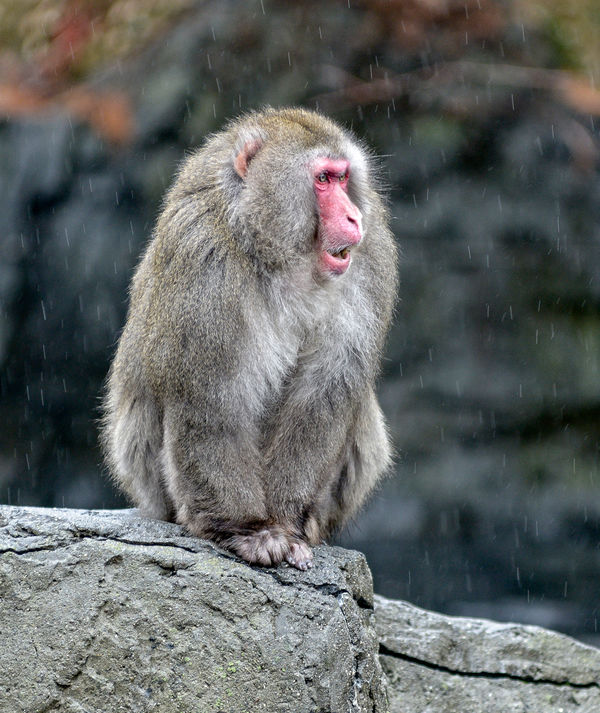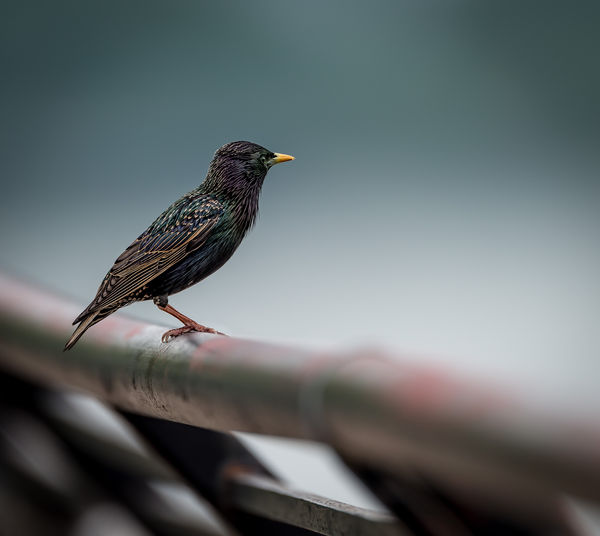Large Aperture vs small aperture
Jun 2, 2015 09:28:34 #
Hello,
Dumb question here from a novice. I understand the way aperture works but not sure I understand the practical need for large apertures. If I get a lens capable of 1.4 or 1.2 yes that's great for low light but my DOF is so small that I'm not sure how practical if shooting people for example- Am I missing something?
Thanks
RT
Dumb question here from a novice. I understand the way aperture works but not sure I understand the practical need for large apertures. If I get a lens capable of 1.4 or 1.2 yes that's great for low light but my DOF is so small that I'm not sure how practical if shooting people for example- Am I missing something?
Thanks
RT
Jun 2, 2015 09:33:57 #
Not a dumb question. Aperture is only one of three things that control DOF. You also need to factor in the subject to camera distance and the focal length of the lens.
The further away from the subject the more DOF.
The longer the focal length of the lens the less DOF (ie: telephoto has less and wide angle has more DOF)
The further away from the subject the more DOF.
The longer the focal length of the lens the less DOF (ie: telephoto has less and wide angle has more DOF)
Jun 2, 2015 09:34:24 #
rthompson10 wrote:
Hello,
Dumb question here from a novice. I understand the way aperture works but not sure I understand the practical need for large apertures. If I get a lens capable of 1.4 or 1.2 yes that's great for low light but my DOF is so small that I'm not sure how practical if shooting people for example- Am I missing something?
Thanks
RT
Dumb question here from a novice. I understand the way aperture works but not sure I understand the practical need for large apertures. If I get a lens capable of 1.4 or 1.2 yes that's great for low light but my DOF is so small that I'm not sure how practical if shooting people for example- Am I missing something?
Thanks
RT
What you're missing is that photography is mostly an intelligently arrived at series of trade offs. Hopefully, optimized selections of shutter speed, ISO, f-stop provide the photograph one is trying to obtain.
If the light intensity falls below a certain level, do you want the photo or not? If you absolutely have to have it, then the trade off is depth of field, or using a much higher ISO.
These are decisions one needs to make at the time of taking the photograph and each set of circumstances requires a different approach.
--Bob
Jun 2, 2015 09:34:24 #
rthompson10 wrote:
Hello,
Dumb question here from a novice. I understand the way aperture works but not sure I understand the practical need for large apertures. If I get a lens capable of 1.4 or 1.2 yes that's great for low light but my DOF is so small that I'm not sure how practical if shooting people for example- Am I missing something?
Thanks
RT
Dumb question here from a novice. I understand the way aperture works but not sure I understand the practical need for large apertures. If I get a lens capable of 1.4 or 1.2 yes that's great for low light but my DOF is so small that I'm not sure how practical if shooting people for example- Am I missing something?
Thanks
RT
DOF also has to do with the distance from the camera/lens. The closer to your subject, the less DOF.
Marion
Jun 2, 2015 09:47:26 #
Also, a larger aperture helps with focusing. Your camera focuses with the aperture wide open, then when you push the button, the aperture snaps down to the selected opening for capture. That's why if you hit the DOF button on the camera body, the image in the viewfinder goes dark. The DOF button closes it to where it would be during exposure.
So, Even though I rarely shoot at 2.8 or 1.4 (depending on the lens being used) I appreciate having fast glass, so I can actually focus in lower light.... and also see what I'm shooting better through the eyepiece in less than favorable light.
So, Even though I rarely shoot at 2.8 or 1.4 (depending on the lens being used) I appreciate having fast glass, so I can actually focus in lower light.... and also see what I'm shooting better through the eyepiece in less than favorable light.
Jun 2, 2015 09:48:15 #
rthompson10 wrote:
Hello,
Dumb question here from a novice. I understand the way aperture works but not sure I understand the practical need for large apertures. If I get a lens capable of 1.4 or 1.2 yes that's great for low light but my DOF is so small that I'm not sure how practical if shooting people for example- Am I missing something?
Thanks
RT
Dumb question here from a novice. I understand the way aperture works but not sure I understand the practical need for large apertures. If I get a lens capable of 1.4 or 1.2 yes that's great for low light but my DOF is so small that I'm not sure how practical if shooting people for example- Am I missing something?
Thanks
RT
Shallow DoF for when all you want in focus is the subject.
Jun 2, 2015 09:50:25 #
rthompson10 wrote:
Hello,
Dumb question here from a novice. I understand the way aperture works but not sure I understand the practical need for large apertures. If I get a lens capable of 1.4 or 1.2 yes that's great for low light but my DOF is so small that I'm not sure how practical if shooting people for example- Am I missing something?
Thanks
RT
Dumb question here from a novice. I understand the way aperture works but not sure I understand the practical need for large apertures. If I get a lens capable of 1.4 or 1.2 yes that's great for low light but my DOF is so small that I'm not sure how practical if shooting people for example- Am I missing something?
Thanks
RT
This might help you a bit:
http://www.cambridgeincolour.com/tutorials/depth-of-field.htm
Jun 2, 2015 09:55:14 #
rthompson10 wrote:
Hello,
...I'm not sure how practical if shooting people for example-
RT
...I'm not sure how practical if shooting people for example-
RT
You're right in that you probably won't use that much for portraits, but still depends on the other factors already mentioned.
You will often see extremely shallow dof used for macro and close-ups of subjects such as insects, spiders, flowers.
Jun 2, 2015 09:55:21 #
rthompson10 wrote:
Hello,
Dumb question here from a novice. I understand the way aperture works but not sure I understand the practical need for large apertures. If I get a lens capable of 1.4 or 1.2 yes that's great for low light but my DOF is so small that I'm not sure how practical if shooting people for example- Am I missing something?
Thanks
RT
Dumb question here from a novice. I understand the way aperture works but not sure I understand the practical need for large apertures. If I get a lens capable of 1.4 or 1.2 yes that's great for low light but my DOF is so small that I'm not sure how practical if shooting people for example- Am I missing something?
Thanks
RT
1) So you can easily (manually) focus.
2) Low light when you are focused near or at infinity you only need shallow DOF. Say night scenics or astro-photography. Also wide angle lenses have huge inherent DOF and so don't really need to be stopped down much or at all.
3) Most lenses are usually sharpest stopped down a few stops from wide open (say f/1.4), so the wider they start the "brighter" you still have at the more appropriate (f/4). With a slow lens, (say f/4) you would be at a dark (f/11).
4) Remember there are instances or situations where the technique or equipment being used would be used totally on manual and with stop down metering.
5) For viewing a lens is never too bright or at too large an aperture.
6) This is not always true, but most of the time since fast lenses cost much more (price a 50mm f1.2 vs. a 50mm f2), they are better made and sharper to begin with.
7) Ever try working for example with a really slow, widest stop f/5.6 range 500mm telephoto lens? Probably not, or you would not have asked.
But you've got to start somewhere. So that is OK being a bit confused. Also you are picking this skill or art up now using modern equipment. The old stuff was a lot more difficult to use and different ion many ways. And you are talking about DSLRs and similar small digital cameras and perhaps their film SLR cousins. Those are not the only types of cameras still used. Some photographers (several on the UHH) use view cameras with leaf shutters. I will not go there. You can research that.
Jun 2, 2015 10:02:26 #
rthompson10 wrote:
Hello,
Dumb question here from a novice. I understand the way aperture works but not sure I understand the practical need for large apertures. If I get a lens capable of 1.4 or 1.2 yes that's great for low light but my DOF is so small that I'm not sure how practical if shooting people for example- Am I missing something?
Thanks
RT
Dumb question here from a novice. I understand the way aperture works but not sure I understand the practical need for large apertures. If I get a lens capable of 1.4 or 1.2 yes that's great for low light but my DOF is so small that I'm not sure how practical if shooting people for example- Am I missing something?
Thanks
RT
You had some excellent answers already. I will make some comments in the hope that those comments will be somewhat useful.
As you already know apertures control the amount of light that enters the camera. When you have the need to use a large aperture like f1.4 it is usually because there is not enough light to take the picture, assuming a higher ISO setting will not be desirable. Such a large aperture will limit your depth of field. Portraitists love to shoot at such a large opening because precisely by limiting the depth of field they obtain what is called "bouquet" or a blurring of the background which makes the subject more prominent in the picture without distractions.
As has already been said, because such a large aperture limits the depth of field the operator needs to be careful in the selections of subjects or go with the wide aperture when it is absolutely necessary to get the shot. What is important to understand is that the large aperture will limit the depth of field especially when closer to the subject.
Another important use for such a wide opening is called "selective focus"which means that only one area of the picture will have accurate focus while the rest will be more or less blurred. This is most useful when you want to isolate a part of the subject.
To make it short, a large lens opening allows more light to enter the camera while limiting the depth of field. How you use a lens wide open is something that depends on your experience as a photographer.
Jun 2, 2015 10:03:43 #
rmalarz wrote:
Nice summation Bob. I'm one of those who usually opts for a higher ISO, then control the noise in PP.What you're missing is that photography is mostly ... (show quote)
Jun 2, 2015 10:17:17 #
All,
Thanks for the responses. As usual for me I need to shoot more and engage in less analysis paralysis :)
RT
Thanks for the responses. As usual for me I need to shoot more and engage in less analysis paralysis :)
RT
Jun 2, 2015 12:28:31 #
Mac wrote:
Shallow DoF for when all you want in focus is the subject.
And also blur the background. This way your subject pops out. If the Blur is pleasing it's called good Bokeh. - Dave
Jun 2, 2015 15:53:09 #
rthompson10 wrote:
Hello,
Dumb question here from a novice. I understand the way aperture works but not sure I understand the practical need for large apertures. If I get a lens capable of 1.4 or 1.2 yes that's great for low light but my DOF is so small that I'm not sure how practical if shooting people for example- Am I missing something?
Thanks
RT
Dumb question here from a novice. I understand the way aperture works but not sure I understand the practical need for large apertures. If I get a lens capable of 1.4 or 1.2 yes that's great for low light but my DOF is so small that I'm not sure how practical if shooting people for example- Am I missing something?
Thanks
RT
Shallow depth of field is used creatively to de-emphasize distracting backround and/or foreground elements using out of focus blurring, isolating the principal element with crisp focus.
But to answer your question, many lenses improve considerably when stopped down 1-2 stops. A 1.4 lens will be amazingly sharp and considerably better at F2.8 than at F1.4. But if you start out at F4, the lens typically won't produce it's best until F5.6-F8. So if you have to shoot at F2.8, it's a help to have a lens that has a max aperture of F1.2 or F1.4. The other thing is that for low light work, a lens with a wide max aperture is easier to focus because the viewfinder is brighter and the AF system can work better.
Jun 3, 2015 08:03:21 #
OldEarl
Loc: Northeast Kansas
I agree with Gene. There are pictures which rely on shallow depth of field--and aperture is one of the factors that the photographer can control. By using a fast shutter speed, I can open up and skip a lot of the background. I also like to shoot in the lower ISO range which improves quality in film and possibly also in digital.
If you want to reply, then register here. Registration is free and your account is created instantly, so you can post right away.














